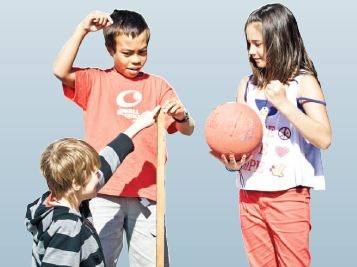ALiM teachers sometimes focus exclusively on number skills and strategies, believing that until their students have mastered these, there is little point in introducing them to other areas of mathematics. However, helping students to make connections between mathematical ideas (and between strands) helps them to construct a broader, more robust understanding of mathematics.
Exploring measurement is a great place to start. Measurement allows students to quantify and describe the world they live in, and its hands-on nature helps students to make connections between mathematics and real life. Measurement crosses strands and contributes to understanding in all strands: students will encounter fractions and decimals naturally when measuring; area and perimeter can be used to describe geometric figures; measured data forms the basis of many statistical investigations.
This resource suggests ways in which ALiM teachers can capitalise on the connections between mathematical ideas and between measurement and number concepts.
Why is this important?
All mathematical ideas are interconnected, so understanding in one area can depend on and strengthen understanding in another. Effective teaching helps students to make and use these connections.
Measurement and number concepts are intrinsically connected – teachers can draw on students’ prior knowledge of number concepts when working on measurement activities, and vice versa. Measurement activities create opportunities for hands-on work and for students to apply their number skills. Emphasising the connections between number and measurement concepts contributes to a broader, more robust understanding of mathematics.
 Read more
Read more
- Connections between measurement and number
- Recognising similar behaviours
- Compare problems in number and measurement
- Area and multiplication
- Measurement data: New learning
- Where to next?
Click to download as a PDF (1MB).